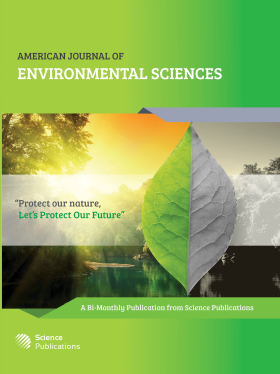Vegetation Dynamics Depending on Ecological Particularities of Bozanta Mare (Maramures County-Romania) Tailing Pound: Case Study
Abstract
The present study followed an ecological demarche of reintegration in the scenary through revegetation of an anthropic ground, consisting in a waste pond formed from the flotation activity of non-ferrous ores. Problem statement: To support the formation of a compact vegetal layer, having anti-erosion and a restoration role, a preliminary study was required regarding the spontaneous settlement of different vegetal species. We had followed the specific floristic composition and biodiversity on the waste pond, manner of association of plant species and possible interactions with other species from the biocenosis (microorganisms and fungi). We had studied the pace at which vegetal species settle, as well as the reciprocal influence, from the point of view of vegetation, with the neighboring area, since the desideratum was the settlement of a vegetation similar to the natural one. Approach: The aim of the research was to draw a list of the vegetal taxa installed on the pond, as well as to detect some succession stages or some possible vegetal associations. We had established the share of different species in the vegetal layer on the waste pond through an analysis of ecological preferences, of the geographical origin of plant species, of the cariological and bioform profile. All this was done to compare the possible vegetal associations which settle on such anthropic grounds with the neighboring vegetation. The approach used was the classical one in fitosociology, recommended by the central European fit sociological school adapted to the pedo-climatic conditions in Romania. Results: Over 50 species of plants and fungi spontaneously settled had been listed and we had followed their association as well as their distribution, compared to the microclimatic conditions of the waste pond. We had distinguished species with a large potential of revegetating highly polluted with heavy metals waste ponds and sites. Conclusion/Recommendations: Starting from this study, we may establish a formula of sustaining the vegetation and using the interactions among species in order to stimulate the settlement of dense vegetation, which might ensure anti-erosion protection and landscape integration.
DOI: https://doi.org/10.3844/ajessp.2009.116.123

- 5,534 Views
- 4,999 Downloads
- 1 Citations
Download
Keywords
- Tailing ponds vegetation
- biological rehabilitation
